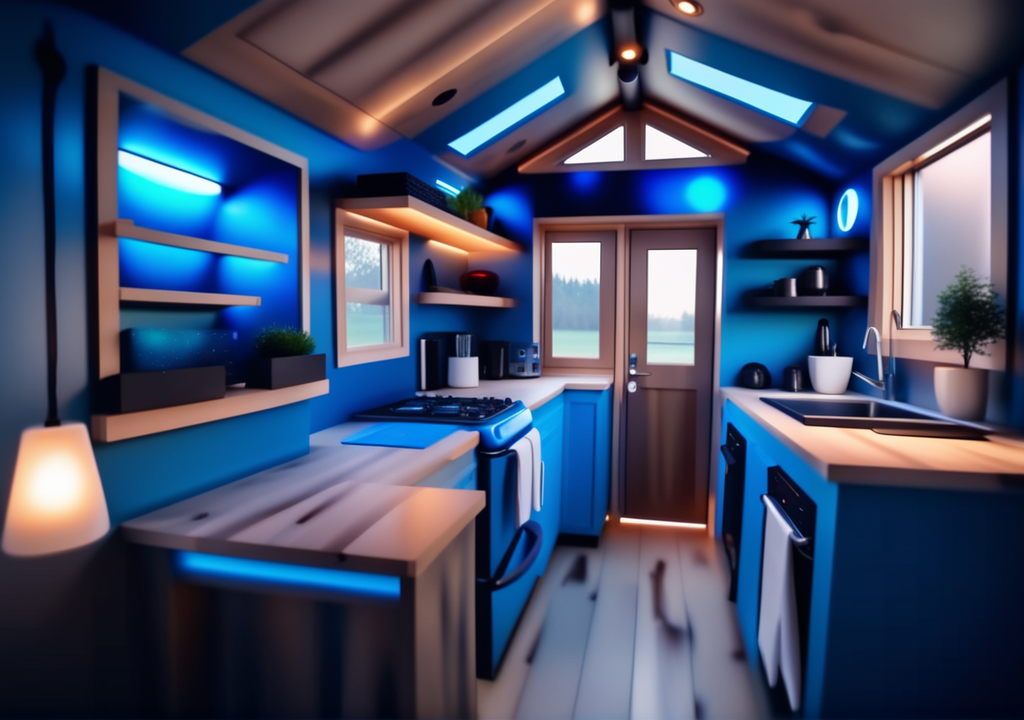Introduction
In recent years, the trend of living in tiny houses has grown exponentially, driven by a desire for minimalism, sustainability, and financial freedom. Tiny houses, often less than 400 square feet, offer a unique opportunity to live more simply and thoughtfully. While the exterior design of these compact dwellings often grabs attention, it is the interior that truly defines the tiny house lifestyle. In this article, we will explore various tiny house interior design styles that not only optimize space but also showcase creativity and personalization.
1. Scandinavian Simplicity
The Scandinavian design style is renowned for its simplicity, functionality, and cozy aesthetics. In tiny houses, where every inch matters, Scandinavian design is a popular choice. Light colors, such as whites and pastels, dominate the interior, creating an illusion of openness and brightness. Clean lines, minimalist furniture, and smart storage solutions characterize this style, ensuring clutter-free spaces. Wooden elements add warmth to the interiors, while textiles and plants contribute to a homely atmosphere.
2. Rustic Charm
The rustic interior design style brings a touch of nature and rural living into tiny homes. This style often emphasizes raw, natural materials like reclaimed wood, stone, and aged metals. Exposed beams and rough finishes add authenticity to the rustic charm. Cozy furnishings like plaid fabrics, fur rugs, and soft cushions make the limited space inviting and comfortable. Utilizing antique or repurposed furniture can further enhance the rustic ambiance, making the tiny house feel like a charming country retreat.
3. Modern Minimalism
For those who appreciate a clean, uncluttered aesthetic, modern minimalism offers an excellent fit for tiny houses. This style advocates the “less is more” philosophy, creating open spaces with a strong emphasis on functionality. The focus is on sleek lines, neutral colors, and a minimalist approach to furniture and decor. Multi-functional furniture pieces, such as sofa-beds and fold-out tables, are perfect for maximizing the limited space. The absence of unnecessary decorations and ornaments allows residents to appreciate the beauty of simplicity and the surrounding environment.
4. Bohemian Eclecticism
For free spirits and adventurous souls, the bohemian interior design style is an artistic and expressive option for tiny houses. Characterized by vibrant colors, bold patterns, and a mix of cultural influences, this style is far from conventional. It encourages self-expression, allowing residents to display their personality through a diverse collection of art, textiles, and unique decor pieces. Cozy floor cushions, eclectic rugs, and hanging tapestries add a touch of coziness and comfort to the tiny space. The bohemian style is an excellent choice for those who seek a living environment that feels like a constant adventure.
5. Japanese Zen
Derived from traditional Japanese architecture and design, the Zen style focuses on creating harmony, simplicity, and a sense of serenity within the tiny home. Natural materials like bamboo, wood, and stone form the basis of this aesthetic. The use of sliding doors and shoji screens helps to optimize space by providing flexible room divisions. The color palette is typically subdued, with an emphasis on earthy tones. Zen interiors promote minimalism, encouraging residents to let go of unnecessary possessions and embrace a more mindful and tranquil lifestyle.
6. Industrial Chic
Drawing inspiration from converted warehouses and lofts, industrial chic is a bold and unconventional style for tiny house interiors. The key features of this design include exposed brick walls, metal accents, and utilitarian furnishings. High ceilings and open floor plans are ideal for the industrial aesthetic, as they create an illusion of more space. A mix of vintage and modern elements, such as repurposed factory machinery or vintage light fixtures, adds character and uniqueness to the tiny home.
7. Coastal Retreat
Bringing the beachside atmosphere into a tiny house, coastal interior design evokes feelings of relaxation and tranquility. Light, breezy colors dominate the space, with a focus on blues and whites to mimic the ocean and sky. Nautical elements, like ropes, shells, and driftwood, can be creatively incorporated into the decor. Large windows and strategically placed mirrors help maximize natural light, making the tiny home feel open and airy. Furnishings that evoke a sense of relaxation, like hammocks or hanging chairs, add to the coastal retreat ambiance.
Conclusion
Tiny houses present a unique opportunity to experiment with various interior design styles while challenging us to make the most of limited space creatively. Whether you prefer the simplicity of Scandinavian design, the coziness of rustic charm, the freedom of bohemian eclecticism, or the tranquility of Japanese Zen, there is a tiny house interior design style to suit every personality and lifestyle. Embracing these design ideas can transform a small living space into a functional, beautiful, and highly personalized sanctuary that perfectly reflects the preferences and passions of its inhabitants. The key is to embrace creativity, make the most of every inch, and discover the style that resonates most with your heart and soul.

